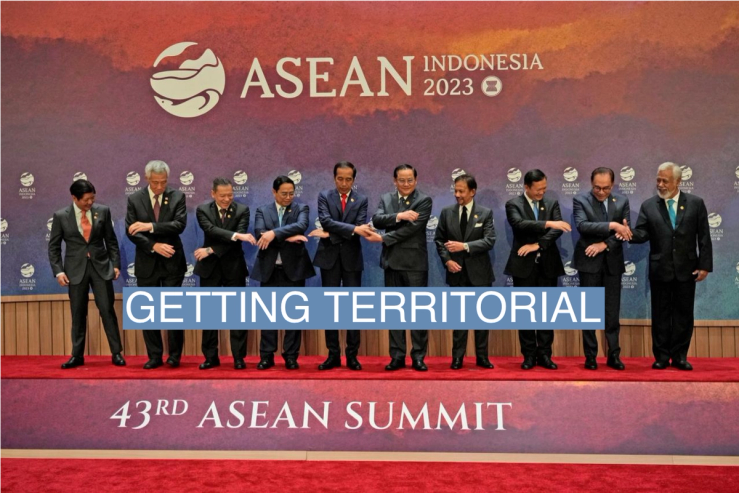The News
A new map issued by China has staked a claim over regions belonging to neighboring nations. The map, released by Beijing last week, has been a source of frustration at the Association of Southeast Asian Nations (ASEAN) summit, which opened today.
The map claims disputed regions in India, Vietnam, Brunei, Malaysia, and the Philippines. It also expands the nine-dash line, China’s disputed claim to a section of the South China Sea, to 10 dashes.
SIGNALS
Chinese leader Xi Jinping has taken an imperial stance with the map — and in doing so has said that his neighbors concerns don't matter, political and international editor Peter Hartcher argues in the Sydney Morning Herald. That could push allies who have tended to align themselves with China towards the U.S., Indian strategic analyst C. Raja Mohan told the paper. "Xi is leaving himself little room and he’s pushing his neighbours toward the US. We have seen great leaders display great stupidity," Mohan said.• 1
The Sydney Morning Herald, The ‘man-child of Asia’ is wiping diplomacy off the map
The border between India and China has been a long-standing source of tension between the two countries. "India and China do take every opportunity to hash out their differences, but it feels like one step forward, two steps back," in regards to their relations, Akhil Ramesh, a senior fellow at the Honolulu-based Pacific Forum, told CNN in a recent interview. The two countries are both vying to be leaders of the Global South, and despite assertions that they are working to warm their relationship, "I do not see this happening," Ramesh added.• 2
Border disputes between China and India have historically result in armed standoffs, Jiba Raj Pokharel notes in The Himalayan Times. Both countries have a vested interest in settling their concerns over the border, Pokharel notes, and "China has to find a lasting solution because it has been alleged of highhandedness," by India and several other countries. But India, Pokharel argues, should also find a diplomatic way to settle the conflict: "It is unbecoming for a nation to be tangled in such petty problems with neighbouring countries," he writes.• 3
The Himalayan Times, China, India and Nepal border dispute: Political in the time of trade supremacy



